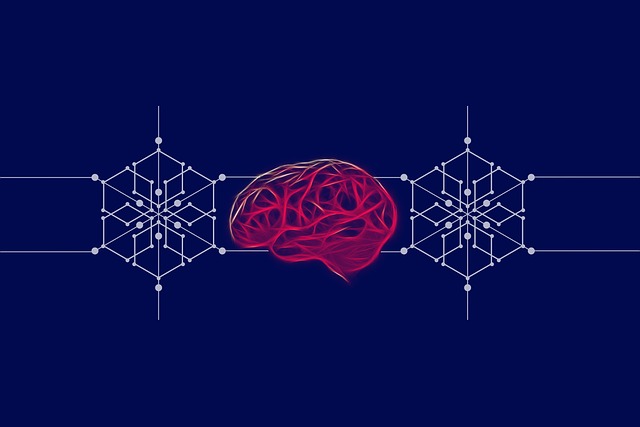Machine learning has revolutionized industries by enabling data-driven decision-making. However, building and deploying machine learning models can be complex, time-consuming, and require specialized expertise. This is where Automated Machine Learning (AutoML) comes into play. AutoML simplifies the process of model development by automating tasks like data preprocessing, feature engineering, model selection, and hyperparameter tuning. In this blog post, we’ll explore the top AutoML tools and platforms, their features, and how they can help you streamline your machine learning workflows.
Why AutoML is a Game-Changer
AutoML democratizes machine learning by making it accessible to non-experts and accelerating the model development process for seasoned data scientists. It reduces the time and effort required to build high-performing models, allowing teams to focus on solving business problems rather than getting bogged down in technical details. Whether you’re a beginner or an expert, AutoML tools can help you achieve better results faster.
What is AutoML?
AutoML refers to the process of automating the end-to-end process of applying machine learning to real-world problems. It includes automating tasks such as data preprocessing, feature selection, model selection, hyperparameter optimization, and even model deployment. By automating these tasks, AutoML enables users to build machine learning models with minimal manual intervention.
AutoML is particularly useful for organizations that lack the resources to hire a team of data scientists. It allows business analysts, software engineers, and other professionals to leverage machine learning without needing deep expertise in the field. Additionally, AutoML can help experienced data scientists save time by automating repetitive tasks, allowing them to focus on more complex aspects of model development.
Top AutoML Tools and Platforms
AutoML tools and platforms have gained significant traction in recent years due to their ability to simplify and accelerate the machine learning process. These tools cater to a wide range of users, from beginners to advanced data scientists, and offer features like automated model selection, hyperparameter tuning, and deployment. Below, we’ll explore some of the most popular AutoML tools and platforms available today.
Google Cloud AutoML
Google Cloud AutoML is a suite of machine learning products that enables developers with limited machine learning expertise to train high-quality models. It offers a user-friendly interface and supports a wide range of tasks, including image classification, natural language processing, and tabular data analysis. Google Cloud AutoML leverages Google’s state-of-the-art machine learning algorithms and infrastructure, ensuring high performance and scalability.
One of the key features of Google Cloud AutoML is its ability to handle large datasets efficiently. It also provides tools for data labeling, making it easier to prepare datasets for training. With its integration with other Google Cloud services, users can seamlessly deploy models into production environments.
H2O.ai
H2O.ai is an open-source AutoML platform that provides a comprehensive suite of tools for machine learning and AI. It supports a wide range of algorithms and is designed to be scalable, making it suitable for both small and large datasets. H2O.ai’s AutoML functionality automates the process of model selection and hyperparameter tuning, allowing users to quickly build and deploy models.
One of the standout features of H2O.ai is its ease of use. It provides a simple interface for users to upload datasets, select target variables, and start the AutoML process. Additionally, H2O.ai offers extensive documentation and community support, making it accessible to users of all skill levels.
DataRobot
DataRobot is a leading enterprise AutoML platform that offers a wide range of features for building, deploying, and managing machine learning models. It supports a variety of data types and machine learning tasks, including classification, regression, and time series forecasting. DataRobot’s AutoML capabilities include automated feature engineering, model selection, and hyperparameter optimization.
DataRobot also provides tools for model interpretability, allowing users to understand how their models are making predictions. This is particularly important for industries like healthcare and finance, where model transparency is critical. With its robust deployment options, DataRobot makes it easy to integrate machine learning models into existing business processes.
AutoKeras
AutoKeras is an open-source AutoML library specifically designed for deep learning. It automates the process of building neural networks, including architecture search and hyperparameter tuning. AutoKeras is built on top of TensorFlow and Keras, making it easy to integrate with existing deep learning workflows.
One of the key advantages of AutoKeras is its simplicity. Users can start training models with just a few lines of code, making it ideal for beginners. Despite its simplicity, AutoKeras is highly flexible and can be customized to suit advanced use cases. It also supports a wide range of tasks, including image classification, text classification, and structured data analysis.
Microsoft Azure Automated ML
Microsoft Azure Automated ML is a cloud-based AutoML service that enables users to build machine learning models without writing code. It provides a drag-and-drop interface for data preprocessing, model training, and evaluation. Azure Automated ML supports a wide range of machine learning tasks, including classification, regression, and forecasting.
One of the standout features of Azure Automated ML is its integration with other Azure services, such as Azure Data Factory and Azure Synapse Analytics. This makes it easy to build end-to-end machine learning pipelines. Additionally, Azure Automated ML provides tools for model explainability, ensuring that users can understand and trust their models.
TPOT
TPOT (Tree-based Pipeline Optimization Tool) is an open-source AutoML library that uses genetic programming to optimize machine learning pipelines. It automates the process of feature selection, model selection, and hyperparameter tuning. TPOT is built on top of scikit-learn, making it compatible with a wide range of machine learning algorithms.
One of the key advantages of TPOT is its ability to discover complex pipelines that might be difficult to design manually. It is particularly useful for users who want to explore a wide range of models and feature combinations. TPOT also provides tools for visualizing the optimization process, making it easier to understand how the best pipeline was selected.
Benefits of Using AutoML
AutoML offers several benefits for organizations and individuals looking to leverage machine learning. First, it reduces the time and effort required to build models, allowing teams to focus on solving business problems. Second, it democratizes machine learning by making it accessible to non-experts. Third, it improves model performance by automating tasks like feature engineering and hyperparameter tuning.
Another key benefit of AutoML is its ability to handle large datasets efficiently. Many AutoML platforms are designed to scale with the size of the data, ensuring that users can build models on datasets of any size. Additionally, AutoML platforms often provide tools for model interpretability, making it easier to understand and trust the models.
Challenges of AutoML
While AutoML offers many benefits, it is not without its challenges. One of the main challenges is the lack of flexibility. AutoML platforms are designed to automate common tasks, which can make it difficult to customize models for specific use cases. Additionally, AutoML platforms may not always produce the best possible model, particularly for complex problems.
Another challenge is the cost. Many AutoML platforms are cloud-based and charge based on usage, which can become expensive for large-scale projects. Finally, AutoML platforms may require significant computational resources, particularly for deep learning tasks.
Conclusion
AutoML is transforming the way we build and deploy machine learning models. By automating repetitive tasks, it enables users to focus on solving business problems and achieving better results faster. Whether you’re a beginner or an expert, AutoML tools like Google Cloud AutoML, H2O.ai, DataRobot, AutoKeras, and Microsoft Azure Automated ML can help you streamline your machine learning workflows. While there are challenges to consider, the benefits of AutoML far outweigh the drawbacks, making it a valuable tool for organizations of all sizes.






